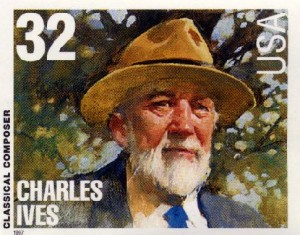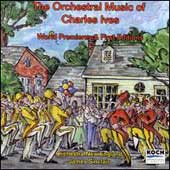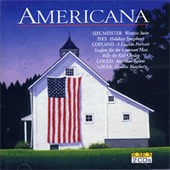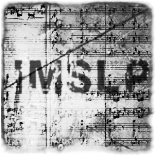Charles Ives (1874-1954) was born in Danbury, CT, studied organ and composition in New York, but got employed as insurance agent, a job in which he was quite successful. Composing became an activity for his spare time. Because his income did not depend on his musical activities, he was able to do whatever he liked. That he did, indeed. In fact, he did that so fanatically that contemporary musicians and composers could not (or did not want to) really understand what he was doing.

Charles Ives
Charles was surrounded with musical originality from his earliest youth. His father showed an unrestrained interest in all kinds of musical experiments. For example, what do you hear if you let two brass bands march towards each other while they are playing different music and you take position in the middle of them? Or, what happens if you accompany a song in another key than the singer is singing in? In both cases, existing material is used to make something that is both unexpected and new. Exactly this is a main theme in the work of Charles. Did you ever hear such a diversity within half a minute as in this fragment from the Country Band March: (mp3 – source).
Ives was not only interested in subsequent juxtaposition of musical ideas, but also in simultaneous combinations of different kinds of music. An extraordinary example of this is Fourth of July. Imagine strolling around in an American town on the 4th of July. A diversity of sound would reach you from all directions: a brass band, people singing songs, a baseball game, fireworks, etc. Ives put all these 4th-of-July-sounds in 6 minutes of music: (mp3 – source). It takes three conductors to perform the work.
Another main theme throughout Ives’ career is his interest in well-known American melodies. This involves church songs as well as folk songs. In about all of his compositions these melodies are incorporated in one way or another. In the fourth symphony, his largest work, dozens of melodies are used, from “Nearer, My God, to Thee” to “Home, sweet home”.
Ives was not really popular during his lifetime, but after his death this changed completely. Apparently, it was only then that other musicians and composers got interested in things that Ives did already years earlier. He had been far ahead of his time. It was only in 1965 that his fourth symphony was performed for the first time. He did not hear it himself. Nowadays, Ives is regarded one of the first major American composers.
Recommended cd’s
Details: Amazon.com or Emusic.com
Details: Amazon.com or Emusic.com
![Symphonies 1-4/Holidays Symphony [...]](../../img/covers/Sony_SB_3K87746.jpg)




